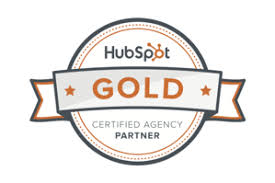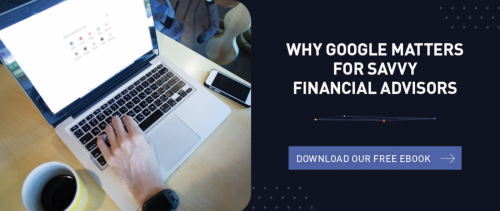The Financial Advisor's Guide to Creating Webinars
 If you work in the financial industry and are relatively unfamiliar with the use of webinars, you are not alone. Most financial advisors have relied on traditional marketing practices to win new clients. They have not had a lot of experience using digital marketing tactics to supplement these practices until now.
If you work in the financial industry and are relatively unfamiliar with the use of webinars, you are not alone. Most financial advisors have relied on traditional marketing practices to win new clients. They have not had a lot of experience using digital marketing tactics to supplement these practices until now.
The Pandemic may be a temporary or permanent game-changer that impacts the ways investors find, research, screen, and interview advisors. No one really knows how long it will be until our lives and business practices return to what we used to call normal.
What we do know is more investors, than ever before, will be using the Internet to find financial advisors and information. And, these needs create a fertile ground for webinars that educate, create interest, and convert viewers into leads and contacts.
Read our blog article: 7 Best Practices For Creating A Financial Advisor Webinar
Why Use Webinars
 There is a common misconception that webinars are an instructional tool used by educational institutions or employers for learning and training purposes. The truth is webinars are useful for just about every profession including financial advisors. For example, webinars empower financial
There is a common misconception that webinars are an instructional tool used by educational institutions or employers for learning and training purposes. The truth is webinars are useful for just about every profession including financial advisors. For example, webinars empower financial
advisors to host informative events that are tailored to their target audiences. Webinars that increase credibility may become an advisor’s best source of new clients.
It is wise to think of webinars as an educational business event designed for those in your community who can benefit from your financial advisor firm’s advice and services. Ideally, this web-based event will engage these target clients through informative and insightful content. In some cases, webinars can be live, interactive programs with audience participation. Or, they can be on-demand at the convenience of the attendee.
In an ideal world, webinars will produce leads and contacts for financial advisors. However, the secondary impact can be building brand awareness and credibility that produces new clients in the future.
Think of webinars as an opportunity to build your financial advisory firm’s reputation as trustworthy, credible experts on financial topics that impact investor well-being.
Read our blog article: 5 Major Benefits When Financial Advisors Use Webinar Marketing
Choose the Right Webinar Format
Webinars are best described as online presentations in a video form.  It is a great way for investors to see and hear information, which increases their retention rates. This is superior to verbal sales presentations that limit retention to what investors hear.
It is a great way for investors to see and hear information, which increases their retention rates. This is superior to verbal sales presentations that limit retention to what investors hear.
Read our blog article: Best Webinar Marketing Practices for Financial Advisors
This is your firm’s opportunity to flex your intellectual muscle and put the merits of your services on full display to an online audience. Whether your webinar takes the form of a lecture, seminar, presentation, or workshop, it must provide high-value information that appeals to investors. Opt for a live, real-time webinar, and your audience will be able to participate by asking questions and participating in your responses.
Alternatively, you can record your webinar in advance and air it at a specified time or on-demand. If you record your webinar before its air date and time, be sure to provide your audience with a means of interacting with your team for follow-up questions, comments, and the scheduling of appointments - virtual or eventually at your office. Using on-demand webinars is a great way to introduce your firm to your ideal types of clients.
Every Financial Advisor is Capable of Hosting a Webinar
Even if you are not tech-savvy, you are capable of producing a great webinar that engages your target audience, resulting in inquiries and interviews. There is no need to shell out thousands of dollars on costly audio-visual technology to host a webinar. You simply need a desktop or laptop computer, a microphone, a camera, a script, and visual aids (optional).
Prepare your webinar PowerPoint or other presentation ahead of time with the appropriate slides, provide an interactive element such as a space/time for discussion or poll, and install the appropriate webinar software. That’s all you need to host a professional webinar that creates new leads and contacts for your financial advisor firm.
Paladin Digital Marketing is proud to be a HubSpot Gold Level Certified Agency. Check out their "Ultimate Guide to Creating Compelling Webinars"
How to Choose a Topic for Your Webinar
Be careful when selecting the subject matter for your webinar. Choose wisely and you will maximize viewership and your results.

There is a simple process that you can employ:
- Think about your ideal types of clients
- What were their financial pain points
- Why did they select your firm
- What is your value proposition
- Ask for a time to talk about your solutions (services)
When in doubt, select a financial pain point that impacts a lot of people who could become clients of your firm. For example, people in your community are frequently faced with the following challenges:
- How to transition from working to retirement
- How to protect assets while they are in transition
- How to select the best financial advisor for their IRA roll-over
- How to budget during retirement years
- How much investment risk can they afford to take during retirement
- How to avoid running out of money late in life
When in doubt, be as specific as possible rather than select general topics. The best webinar topics address financial pain points. Investors have to attend your webinars to be introduced to general solutions. But, they have to meet with you to get the solution for their situations. Specificity in webinar content helps your topic stand out from the pack, greatly enhancing the chances your target audience will choose to attend.
Instead of guessing which topics are most likely to pique your audience’s interest, it is better to rely on hard data. Take a close look at Google Analytics for your financial service firm’s website. This helpful tool is free and it makes it easy to determine which pages on your site are the most popular. Click on Behavior Overview and begin analyzing the top pages of your site for the past year. Jot down a list of the subjects that are covered on these pages and select those you believe are most likely to create interest and produce leads for your services.
Float Some Trial Balloons
There is no harm in suggesting some potential webinar topics on social media to measure the interest in particular financial topics. In fact, you can make suggestions, but you should also consider asking your target audience what specific topics they are most interested in learning more about. Google Forms and other online survey tools such as Survey Monkey empower you to ask such questions, providing your audience with several choices.
Some financial advisors have found the use of Facebook advertisements helps test out potential topics. The advertisement goes to your webinar library where you can measure interest and determine the cost-per-click to calculate your audience’s level of interest.
For more tips on why Google matters download our free eBook:
How to Get More People to Register and Attend
Convincing people to register for your webinar and actually showing up are by far the most challenging aspects of this digital marketing strategy. Ideally, you will highlight the upcoming webinar a variety of ways that include your:
- Financial advisor website’s home page
- Social media connections
- Drip emails
- Newsletters
- Paid advertising

Reach out to those on your contact list to inform them of your upcoming webinar and make it easy for them to register. Be sure to highlight the day, time, and subject matter of your event wherever you choose to promote it. Spread the word about your upcoming webinar well ahead of its actual date so people can schedule it on their calendars.
Just because people register for your webinar does not mean they will actually attend it. Transmit an email confirmation to every person who registers to attend your online event. A confirmation email sends those who have registered to a landing page that features the key details of the upcoming webinar. It will also help to reinforce the event with a follow-up email message that is sent to attendees after they fill out the registration form.
You may want to promote the idea that attendance is limited so they know their attendance may impact the attendance of others.
You will need a compelling webinar topic to increase attendance. In general, bland titles do not work.
Aside from the date, time, and subject matter, the follow-up message should also explain what equipment is necessary to participate in the webinar. As an example, attendees will likely need the following:
- A computer
- A reliable wireless connection
- Speakers or headphones to listen to the presentation
- A microphone for participation (if applicable)
- A webcam
Finally, be sure to include a few compelling details about the event’s highlights such as information about the presenter or an interactive component of the webinar to increase interest. Perhaps, you promote tips that they can’t get anywhere else.
Read our blog article: 5 Ways Financial Advisors Can Increase Webinar Attendance
How to Get Your Audience to Engage and Stay on the Webinar
Now that you have convinced people in need of financial advisory services to tune in to your webinar, the other half of the battle is keeping their eyes on the screen throughout the duration of the event. The majority of webinar attendees depart the session in the first 5-10 minutes or before the halfway point if they don’t think they are receiving adequate value for their time.
This is precisely why you should market the webinar as a brief introduction to a certain topic or a brief information session providing helpful tips for financial success pertaining to a specific pain point or issue. Set the expectation that the webinar will be short and you will greatly increase the chances of attendees sticking with the presentation from beginning to end.
Don’t Digress!
Do not make the webinar a sales pitch. You will lose too many attendees. Instead, stay on point and promote the idea of a pearl of wisdom at the end of the webinar. You want attendees to feel as though they are getting the inside scoop on subject matter that impacts them.
Staying on a single topic provides much-needed focus and clarity on specific financial pain points, ensuring the audience does not end up confused. Remember, you know the content a lot better than your audience. Stay focused on your topic and do not use investment jargon that people may not understand. You will lose a lot of attendees if you jump to different topics and use words they do not understand.
Set the Structure
The most engaging webinars have a carefully planned format. Provide this structure in advance and your audience will feel as though there is a meaningful progression throughout the webinar rather than a random list of topics and soundbites.
When you provide your audience with an outline, be sure to dangle a high-value tip that will be presented towards the end of the webinar. Examples of webinar structures/formats include:
- Panel discussion
- Interview-based
- Demonstration of a value proposition
- Multiple presenters
- FAQ/discussion with the audience
Practice Makes Perfect
It is a mistake to assume you can nail your webinar presentation on the first take. Conduct at least one dry run prior to going live to ensure you can communicate the information in a simple, time-efficient manner.

Furthermore, practice will help you time the length of your webinar and fine-tune the key points that you want to emphasize.
As an example, GoToWebinar software simplifies the planning, promotion, and reporting aspects of online events. In fact, GoToWebinar even provides users with helpful polls, surveys, and other interactive tools to thoroughly engage with your audience.
Zoom has quickly emerged as one of the more popular webinar software tools. Zoom empowers users to share their online presentation with more than 10,000 audience members at once. This software provides:
- HD video
- High-quality audio
- In-depth analytics
- Informative reports
Perhaps most importantly, Zoom features an array of audience participation tools from in-webinar chat rooms to a virtual “raised hand” feature and polling to guarantee the webinar really is interactive. If the webinar is live, be sure to allow time for questions and comments.
Read our blog article: The Merits Of Financial Advisor Webinars
What Makes a Really Great Webinar
Unfortunately, a high percentage of webinars are truly forgettable. They do not achieve their intended purposes. If you have not watched a financial industry webinar, now is a good time to do that. Ideally, you will attend a webinar that is hosted by another financial advisor firm. Take notes to identify what you liked and did not like. Pay close attention to the characteristics that you think had the greatest value for attendees.

The moral of the story is your webinar should not be a boring lecture or a sales pitch. It has to produce a lot of value, in particular if you want attendees to attend future webinars. Learn from your mistakes, incorporate the lessons into your next webinar, and keep getting better over time.
Making Webinar “Magic” Starts With Setting Expectations
If you promote your next webinar with a general preview that merely provides the subject matter, date, and time, you will likely lose potential attendees. Alternatively, if you create higher expectations for the webinar, your next audience will have plenty to look forward to. This is your opportunity to communicate the merits of your upcoming webinar in a persuasive manner. Let it be known as frequently as possible that your event will feature particular highlights such as:
- One or several notable speakers
- New research that provides important tips
- The opportunity to pose questions to experts
- Red flags that represent hidden risks
Create high-value expectations so your audience has something specific to look forward to during the webinar.
Let the Audience Participate
As noted above, the best webinars are dialogues as opposed to monologues. Those who invest their limited free time in attending your webinar should have the opportunity to ask questions and provide comments. This is not to say you should let the audience disrupt the webinar with constant questions and comments. Rather, there should be a question and answer period at the end of the event - another reason to hang around. 
As noted earlier, some webinar software provides participants with the opportunity to discuss the subject matter with one another as well as the presenter for your financial advisor firm (online chatbox). Even if your event is recorded ahead of time, you can still establish a window of time for the audience to pose questions, raise concerns, and provide feedback. This opportunity to engage makes your target audience feel as though their feedback and curiosity is truly valued by your financial advisor firm. After all, your process starts by learning more about your clients.
Ideally, one of your team members will respond to questions and concerns in real-time with a verbal or typed response. However, if your webinar is not live but uploaded as a recording, one of the hosts should respond to each individual participant in a timely manner, whether it is through a recorded answer, an email or a telephone call.
Follow up With Webinar Attendees After the Session
Do not leave your audience hanging! The best webinars include a convincing Call-To-Action that compels the audience to schedule an appointment. Encourage the audience to call or email you to learn more about your firm’s characteristics and value proposition.
If you plan on hosting another webinar, are launching an email newsletter or providing a new service, promote the details of those offerings at the end of the webinar to encourage your audience to take the next step toward becoming a client. In other words, this is your one time opportunity to “start a conversation” with your target audience, ultimately converting them from attendees to prospects, and from prospects to revenue-producing clients.
Watch our video to learn more about Paladin Digital Marketing
Updated 10/20/2020






